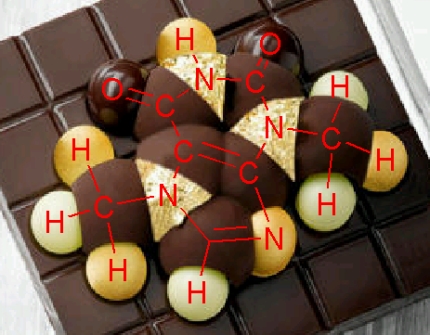 |
| www.chocoimages.com |
The etymology of Chocolate spawns from an Aztec drink discovered by the Spanish and called Xocolatl. The drink was a raw brew of bitter cocoa. To make it palatable to the sweeter European tastes, the Spanish added milk and sugar creating the world’s first hot cocoa drink. Since then the industry and the people who drove it have created names like Nestle, Cadbury Schweppes and Ferrero SpA. This blog will identify the tastes of chocolate, the amazing new kinds being made and the chemistry that compels most of us to fall inexorably in love with the confection.
The year is 1860 and revolutions are gripping Germany and the Ottoman Empire. The civil wars are ripping America and rebellion ferments in India. Far removed from these tragedies of life a little man with lots of spunk tries to make the world a sweeter place to be. He was a Swiss and gifted with the rocky resilience and determination they are known for, Henri Nestle starts shop of Nestle & Co. The initial chocolates favored the Swiss taste of strong and bitter. Dark chocolates gripped the Swiss nation and overflowed to neighboring Germany. A year later the German revolution was over. It wasn’t till the taste of amour crossed the English Channel did it face resistance from the peaceful but sweet loving Britons. This allowed the entry of a new player, Cadburys which revolutionized the brown chocolate market. As candy and other derivatives of chocolates took hold, the centre of the confection world shifted west across the Atlantic to the city of Chicago.
Chocolate in essence can only be of two types, Black or White. The other variations depend purely on the amount of cocoa. What makes the industry really fun is the diversity it allows by experimenting with flavors, additives and ratios. I’ve TRIED to make mint chocolate once. The main ingredients were grounded cocoa with milk, sugar pepper and essence of mint. I wasn’t like 100% successful, though the result was perfectly edible and tasted of mint. The curious things I learned from this experiment included but not limited to: Pepper and sugar are flavor enhancers; you dilute chocolate with vegetable oil and not water. Then there are the molds which you can use to allow fillings of honey, mildew, nutmeg and raisins. Shapes also play an important role in justifying the chocolate. Dark chocolate is a better binder than white chocolate and as a result can support much more exquisite shapes.
 |
| www.metro.co.uk |
So why does chocolates remain a delicacy for mankind. Why does it retain its symbol of love and refinement? Arguably the first can be associated to the chemicals theobromine and phenylethyl amine. To a chem. E both these compounds are aromatic in nature possessing resonant structures and weak chemical bonds. As a result they can easily break bonds to release energy and spawn reactions that give pleasurable smells and products. An easy example of such a reaction is by the means of a deodorant like. The chemicals break up on your body to cover up your stink. Another historically perturbing question to men at least is DO woman really dig chocolates and why? Tthat would answer one sure thing about the cuter sex. Billions of dollars of research later scientists could say this. Chocolates are extremely attractive to women for two primary reasons. The smell triggers the release of endorphins, (also called pleasure hormones) which satiates them. The amine on the other hand surges production of oxytocin which is associated with love and warmth. So the familiar warm and fuzzy feeling becomes a reality.
 |
| www.khymos.gr.ju |
Chocolates are becoming more powerful and bold in their ideas and concepts every day. Changing from the Chocó bar to soft core bonbons and finally the artificially engineered chocolates that we can now consider to make. The theory behind this concept would be artificial aromatic compounds either of the phenol or ketone group. Compounds from these groups can be used to create compound chains which tamper with hormonal balance of the body. For now this remains unlawful but as we subject ourselves to greater doses of caffeine and toxins the line between artificial chocolates and danger gets finer by the minute. Synthetic chocolate can be used for good too though. The world craze for chocolate has contributed to the destruction of vast areas of amazon forest. Synthetic chocolates through yeast or chemical bases can substitute some of the need. With time, chemistry and chocolatiers will find the need to co-operate in order to maintain the sweet success of this sticky story.
My mint Honey mint choco recipe
A can of cocoa powder, Icing sugar, Milk, Mint extract, Clear edible oil, Raisins, Honey, pepper and sugar.
Mix cocoa and milk in a suitable ratio to obtain desired color and consistency. (Rule of thumb: 1spoon to 2 cups). Add icing sugar to desired taste. Warm the concoction over a very low flame for 2-3 minutes while stirring. For a cup of chocolate add a spoon of Mint extract and half a spoon of honey. (Vary by taste.) Add raisins liberally and sprinkle pepper to taste. While stirring add oil judiciously to remove sluggish coagulation. Use molds to create shapes and add extra fillings as you wish. Quick freeze for 1 hour. Stow it in the refrigerator.
 |
| www.fergusonpiaresonline.ca |
No comments:
Post a Comment